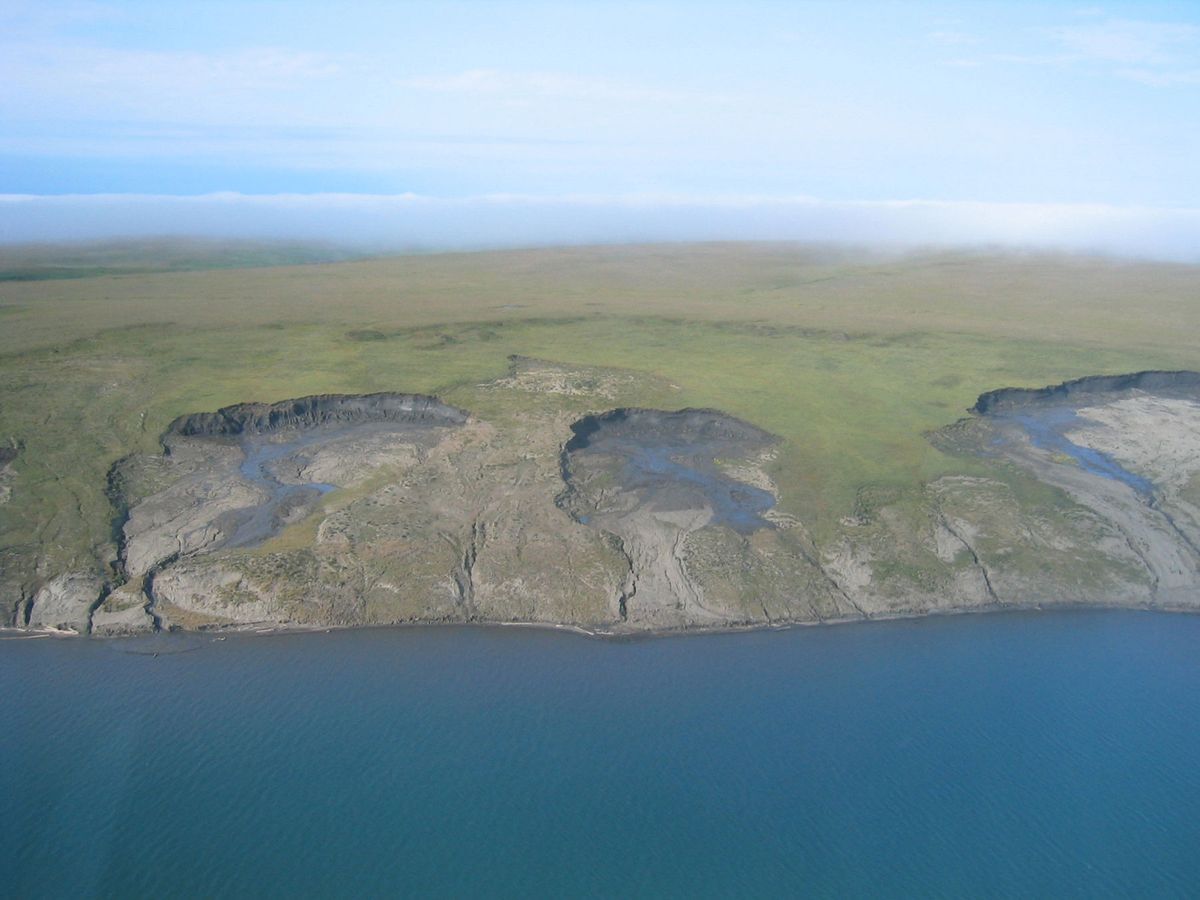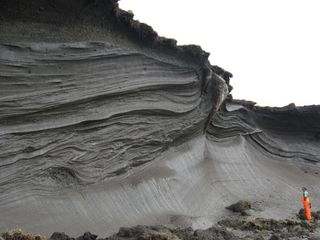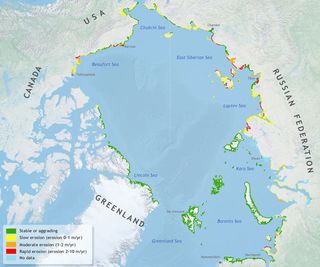Arctic's Icy Coastlines Retreat as Planet Warms

In the high latitudes, climate change projections must take a new factor into account: Ice. In the Arctic, the loss of sea ice is likely to have dramatic repercussions, including greater erosion, which can present problems for the people and economic activity in this region, according to two new reports.
Sea ice is disappearing from Arctic waters at an unprecedented rate — more rapidly than predicted by the most extreme projections in the most recent assessment report by the Intergovernmental Panel on Climate Change, according to the researchers. [Image of eroding coastline]
The rapid decline — 2010 had the third smallest summer ice cover of the past 30 years — suggests that human-caused climate change is being augmented by natural fluctuations, said Volker Rachold, a researcher with the Alfred Wegener Institute in Germany who contributed to two recent reports on the Arctic coastline. "Otherwise, it would be difficult to explain the rapid loss of sea ice we are seeing at the moment," Rachold said.
Less sea ice means more open water, which means stronger waves generated by wind. These, in combination with warming temperatures and more storms, mean more erosion of coastlines. Rising sea levels are also expected to enhance erosion. One of the reports, a study published in the journal Estuaries and Coasts, found an average rate of erosion of 1.6 feet (0.5 meters) per year for the Arctic coast. It identifies the Laptev, East Siberian and Beaufort seas as the areas with the highest rates of erosion.
Icy coasts are vulnerable
Some coastlines are more vulnerable than others. Rocky shorelines easily outlast the frozen sediments — the permafrost coast — that lines Arctic terrain. Sixty-five percent of the coastline facing directly into the Arctic Ocean, and 34 percent of the world's coastline, are Arctic permafrost.

These sediments can be rich in ice, making them sensitive to erosion, because warmer temperatures and waves wear away at them, Rachold said.
Sign up for the Live Science daily newsletter now
Get the world’s most fascinating discoveries delivered straight to your inbox.
Coastal erosion and warming temperatures — record high temperatures extended across Greenland and the Canadian Arctic last summer — could exacerbate global warming by releasing gas hydrates contained in the permafrost. Gas hydrates are ice-like crystals composed of water and gases, often methane, a greenhouse gas like carbon dioxide; however, the implications of the release of gas hydrates aren't fully understood, according to Rachold.
The human dimension
Permafrost sediments are often flat and low-lying, making them good locations for settlements. Unfortunately, in some places, erosion can vary up to 33 to 98 feet (10 to 30 meters) per year. Storms are a particularly potent cause of erosion, according to the second report, The State of the Arctic Coast 2010. Both reports were prepared by teams of international scientists.
Many Arctic communities have a history of dealing with retreating land. Even so, some are in dire situations.

For example, Shishmaref is a community of indigenous Inupiaq located on a barrier island in Northwest Alaska. The island, a quarter of a mile wide and 3 miles in length, is made of fine sand and permafrost. After watching both its northern and southern shorelines steadily creeping inward, punctuated by severe storms, the community decided to relocate to the mainland, according to the Shishmaref Erosion & Relocation Coalition. [Climate Change Redraws World Maps]
Sea walls and other barriers are options for some communities, but they are costly and funds are limited, the report says, which points out that changes will also affect economic activity, which in the Arctic focuses on extracting natural resources, such as fishing.
Monitoring the Arctic coast should be a priority so people can adapt to changes and make sure future development is sustainable, according to the second report, which assesses the physical, biological, social and policy dimensions of the effects of climate change on the Arctic coasts.
You can follow LiveScience writer Wynne Parry on Twitter @Wynne_Parry. Follow LiveScience for the latest in science news and discoveries on Twitter @livescience and on Facebook.
Most Popular

